When I was growing up in Northern Idaho our grade school showed a movie in the auditorium every year before we went home for the Thanksgiving holiday.
One year the film we saw was Jeremiah Johnson.
In the film, Johnson, a wannabe mountain man, happens across a genuine Hawken rifle. The note attached to the rifle read something to the effect “it is a good rifle and it kilt the b’ar that kilt me.”
From that time on, I not only wanted to be a mountain man, but I needed a Hawken rifle ($600).

If you’ve ever wanted to be a mountain main, or just wanted to get into black powder hunting or shooting, you’ve come to the right place. We’re going to talk about all the things you need to know about getting started with muzzleloaders, what you need to look for, and where to buy all the fun stuff you need.
What is a Muzzleloader?
In short, a muzzleloader is any firearm that you load from the end of the barrel where the projectile exits, which is called the muzzle. It could be a rifle, a shotgun, or a pistol or a revolver. For our purposes here we will focus on rifles because they are a simple and easy way to enter the world of black powder shooting.
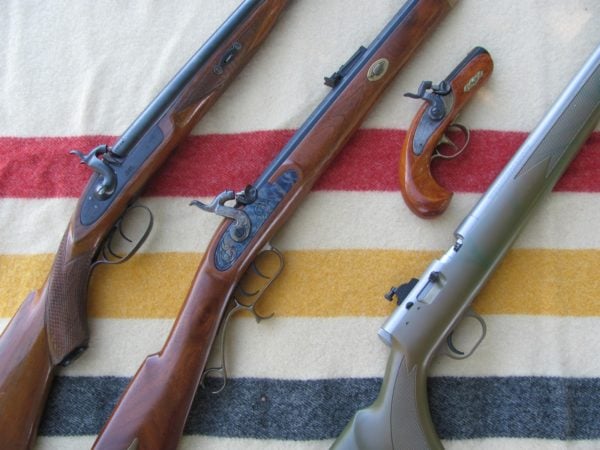
Types of Muzzleloading Rifles
There are many kinds of muzzleloading rifles available to shooters today. But let’s narrow our focus even more and group our guns into ‘traditional’ and ‘modern’.
Traditional Rifles
Traditional rifles are going to be something like Jeremiah Johnson’s Hawken rifle, or a Kentucky long rifle or something we may have seen in a movie about the American Revolution or Civil War. The rifles consist of 3 main parts: Lock, Stock and Barrel. Bet you didn’t know that common phrase comes to us from the world of muzzleloading, did you?
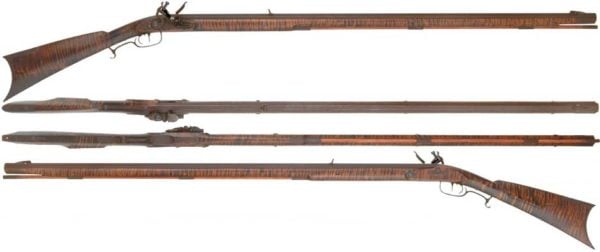
The lock is simply the mechanism that allows the hammer to be cocked under spring tension and then to be released when the trigger is pulled. The barrel is obviously the part of the rifle that allows us to contain our powder charge and projectile and serves to stabilize our projectile and send it on its way to the target. The stock ties the lock and barrel together and provides us the means to hold the muzzleloader steady.
Modern Rifles
Modern or in-line rifles are basically the same as our traditional rifles with one small difference. The primer or cap is in a direct line to the powder charge and the barrel. This allows for a cleaner priming flame to ignite our powder and also aids in cleaning and maintenance since everything is in a straight line. Additionally, the in-line rifle also generates a bit more pressure and velocity because the breech seals tighter than a traditional rifle.
Loading the Muzzleloading Rifle
Pick up a muzzleloader and you become an instant handloader. You’ll need some tools to load safely and correctly. Always wear safety glasses.
You will also now be violating a cardinal rule, “Never point the gun at something you don’t intend to shoot”. You will necessarily have your hands and fingers over the end of the muzzle to load the rifle. Remember, a muzzleloader is not considered to be loaded until a percussion cap is placed on the nipple.
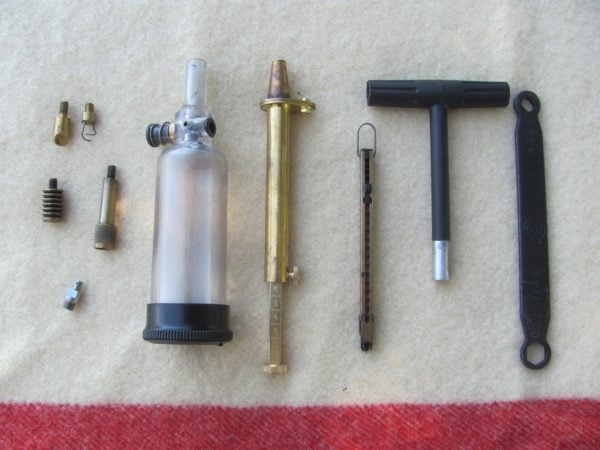
So let’s Start the Process
First determine that the rifle is unloaded by dropping the ramrod down the barrel. At the point the ramrod exits the muzzle place your thumbnail and mark that spot on the ramrod. Pull the ramrod out of the barrel keeping your thumb in that spot and lay the ramrod along the side the of the barrel with your thumb resting on the muzzle.
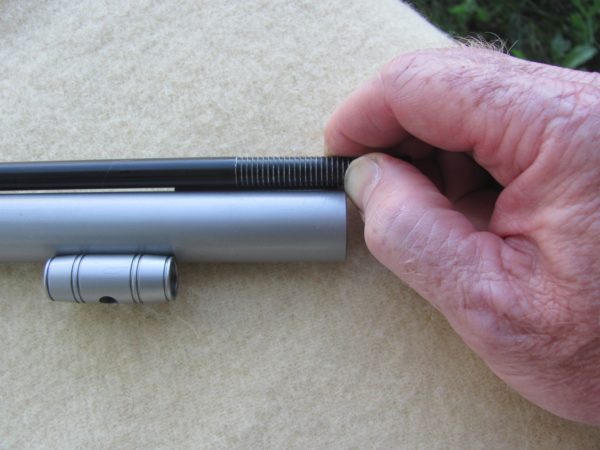
If the end of your ramrod goes all the way to the breech your gun is unloaded and ready to charge. If the ramrod extends up past the muzzle, there is a charge or obstruction in the barrel that you need to address before loading your rifle.
Now, place your rifle on half-cock or full-cock, depending on model, and place a percussion cap on the nipple. Point the rifle at the ground, preferably toward a leaf or grass and pull the trigger. The cap should ignite and you should see the leaf or grass move.
Do this twice. This does a couple of things: it helps dry any moisture or lubricant in the breech, the nipple, and the bore, and if the leaf moves it means the bore is clear and ready to load.
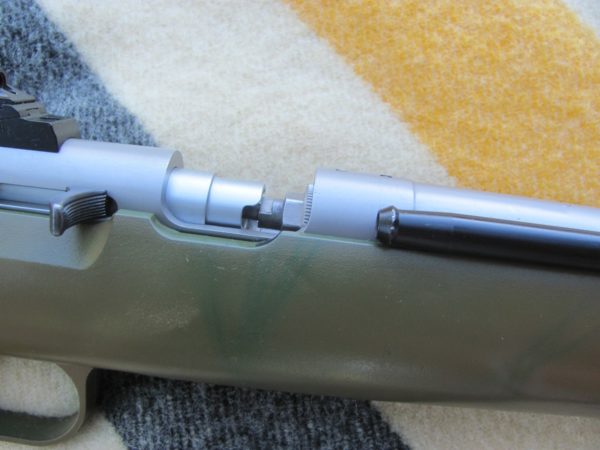
Set your rifle up against a bench or sturdy object.
You are ready to charge the rifle with powder. Black powder and black powder substitutes like Pyrodex are measured by volume, not weight. You must have a black powder measure to correctly measure your charge.
Also purchase a powder horn or smaller container to pour powder into the measure. Never pour directly from the bulk can.
Black powder is very volatile and subject to ignition from sparks or even static electricity, so you want to deal with the smallest amounts possible while loading your rifle. Pyrodex is less sensitive and less apt to absorb moisture. It’s also easier to clean and easier to store safely. For beginners I highly recommend Pyrodex products.
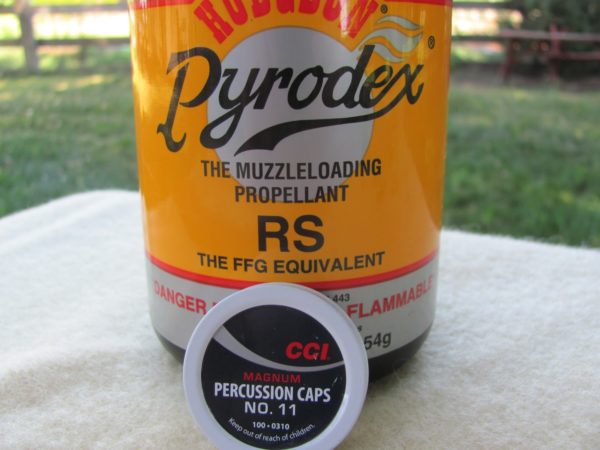
Pour your powder into the powder measure. Be sure to double-check the charge on the measure.
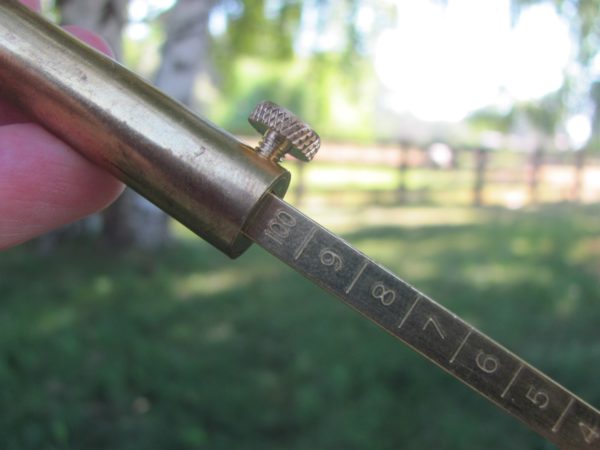
Now with your fingers only, pour the powder into the barrel. Tap the barrel a couple of times to be sure the powder goes all the way to the breech.
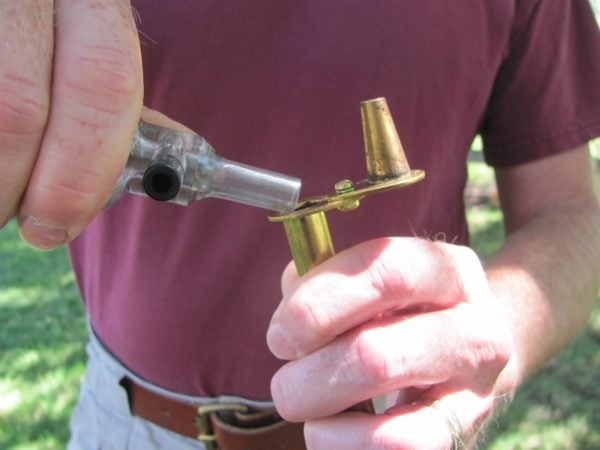
Next, we’ll seat our bullet. For a patched round ball, center a pre-lubed patch on the bore and place a round ball in the center of the patch. If the ball has a sprue or flat spot from the bullet mold place the ball so the sprue is pointing up.
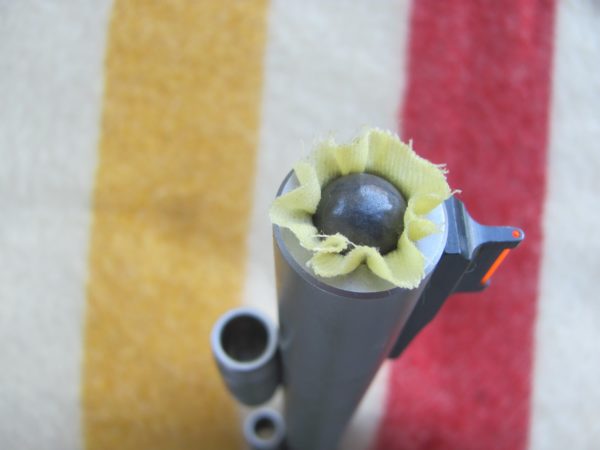
Now use a short starter to start the ball into the barrel.
Once the ball is started take your ramrod and firmly drive the ball down the barrel. Use short, straight up and down strokes so you don’t pull or push the ramrod back and forth and risk bending or breaking the rod.
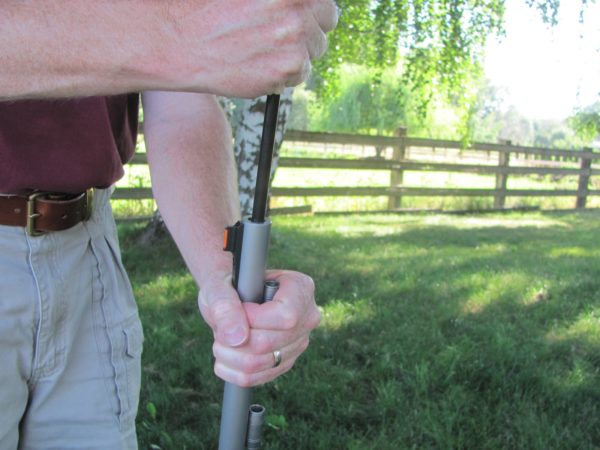
When the bullet is all the way down on the powder charge, tap the ramrod firmly to seat the ball tightly against the powder.
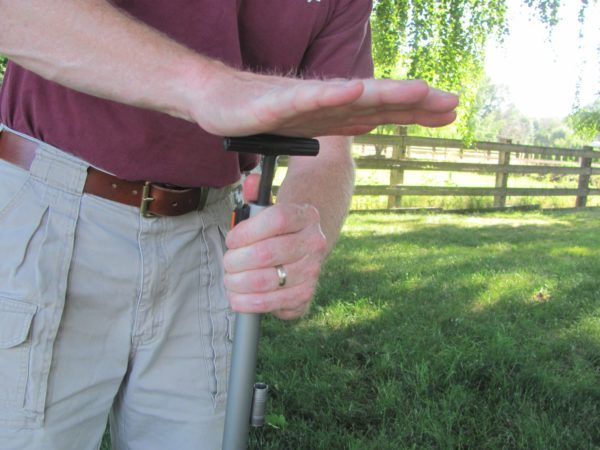
Remove the ramrod. I’ve seen the results of not removing the ramrod…generally a short flight and a busted ramrod.
Now you are ready to place your percussion cap on the nipple.
Use the tool supplied or recommended for your rifle so you do not handle the caps any more than necessary. Be sure the rifle is pointed downrange.
Once you place the cap on the rifle it is considered loaded and ready to fire.
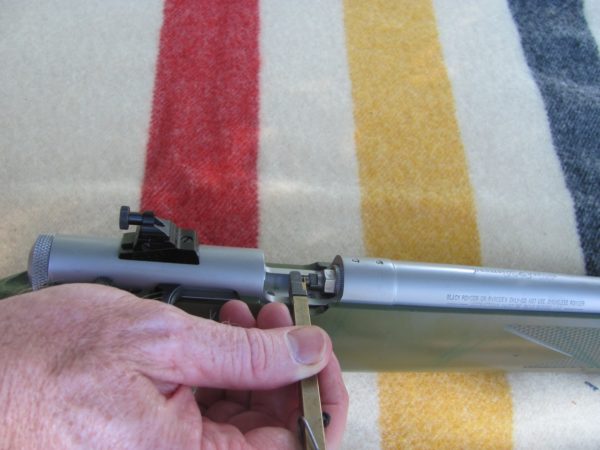
You have successfully loaded your rifle! You are now ready to shoot!
Shooting the Rifle
Just like any other rifle, the muzzleloading rifle is fired by simply moving the safety to “fire” and squeezing the trigger.
However, even with most modern muzzleloaders our lock-time, meaning the time it takes from the moment the trigger releases the sear to the time the powder charge is ignited and sends our bullet down the barrel, is very slow compared to a modern bolt action rifle. Therefore, our technique must be very good in the trigger squeeze and follow through departments.
With a traditional muzzleloader you will very often hear the hammer hit the cap, hear the cap detonate and hear the charge ignite. While still a short time in the big scheme of things, it is slow compared to our modern centerfire firearms. You must keep your sight picture as long as possible and keep your cheek welded to the stock until the rifle comes out of recoil.
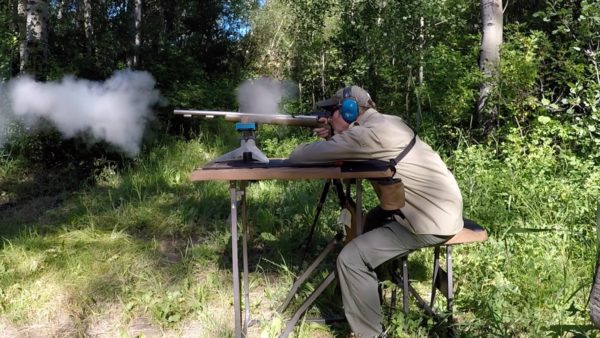
Final Thoughts and Pointers
This article is meant to spark some interest in muzzleloading. If you have never fired a muzzleloader, attend a class or go with someone experienced until you understand the basics.
The National Muzzleloading Rifle Association as well as the National Rifle Association are great resources for training and instruction.
Use Pyrodex while you are learning. It is safer, easier to store and easier to clean than real black powder.
Speaking of powder, keep your powder dry!
Muzzleloaders are not typically considered firearms by BATF. You can go to your favorite store or online outlet, choose the gun of your choice, pay and go home. No paperwork, no background checks, no waiting. That said, a few of the newer inlines do qualify as firearms due to their construction.
So there you go. All you wannabe mountain men and women get out there and give muzzleloading a try. You may find a new and challenging sport that will test your marksmanship skills and if you pursue wild game, your ability to stalk close now becomes a must.
Next…we’ll discuss cleaning and maintaining your muzzleloaders.
Did you enjoy this Muzzleloading 101 class? Can you think of anything I left out? Let me know in the comments below!

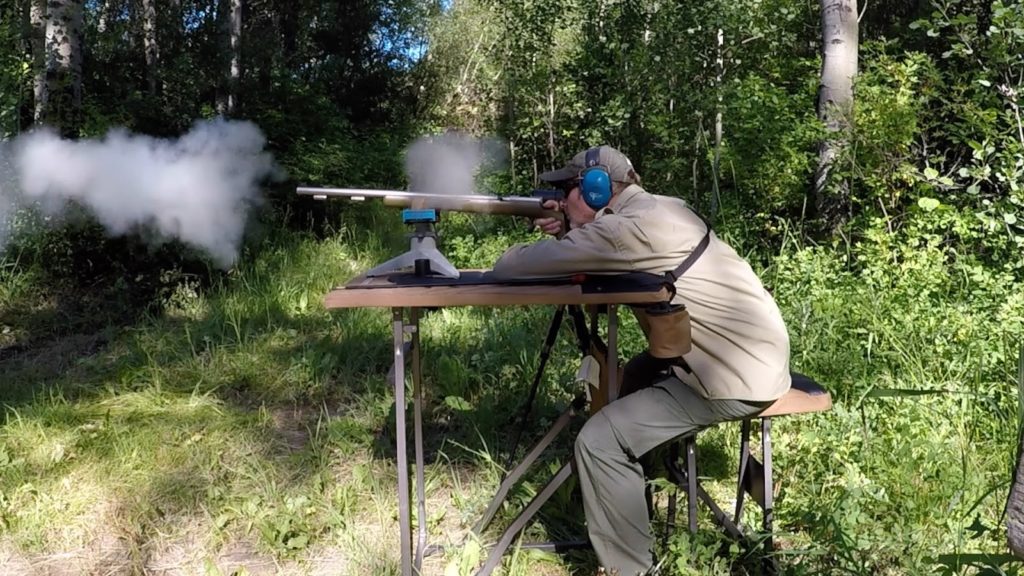



11 Leave a Reply
You reference measuring and pouring in the powder but not how to determine the proper load. I have not fired my Kentucky long rifle for MANY years and need advice
i remember going to JR high school most of us boys had a rifle hung in the back window of our pick-ups. no problems . southren NM
OK, one thing that would be very helpful. In step one, measuring to insure there is not already a load in the barrel. What do you do if there IS a load in a barrel of a gun you bought or enheritted? I have one, what do I do ? It is a modern style Hawken 59 cal. Robert.
I would get a ball puller and remove the load. This can be quite difficult. a gunsmith would be a good idea if you can find one who works on black powder guns. Good luck
cool
Mark ramrod after loading.
You missed the "bounce" when seating the ball, while the rod is 3/4 the way down the muzzle, lightly drop the ramrod (bounce) and listen to the dull thud it will make on a not fully seated ball, then continue to tamp until it seams seated fully and drop the rod, (bounce) you will hear and feel the clink of a well seated shot, it will bounce up more sharply. This may seem like overkill, but a unseated and poorly tamped ball can lead to a lot damage on a cheaper firearm, or a dry fire if the powder runs down the barrel away from the nipple or pan for a flintlock. Also....on long shoots, don't forget you have loaded, it is easy to forget and double load....if you load and walk to the next target, get a pattern you always follow as you can get caught up in the fun and make a mistake.
Sorry, but bouncing the ramrod is NOT a good plan.
Having the ramrod marked at the height of the charge when properly loaded is the best way to know if it is right or not.
Using firm and steady pressure is what you want to apply to the charge after seating the bullet every time ensures consistency in the shot string.
My ramrod fits inside the bore when empty, and I have two marks for the two loads I have developed, and if I change the loads, I may have to put labels on the ramrod!
I'm a retired industrial arts teacher that taught wood shop. In our HS we had a rifle range. The kids would go to their lockers and get their firearms, take them to class and go to the range. Yes, times sure changed - - NO ONE thought anything of it but fun.
When I lived in E Oregon I learned that every high school had a rifle team and an indoor range someplace. We'd be in a better place if every student was exposed to the correct and safe use of firearms.
Our woodshop teacher had us make crossbows the year after the muzzleloading pistol project:)
cool